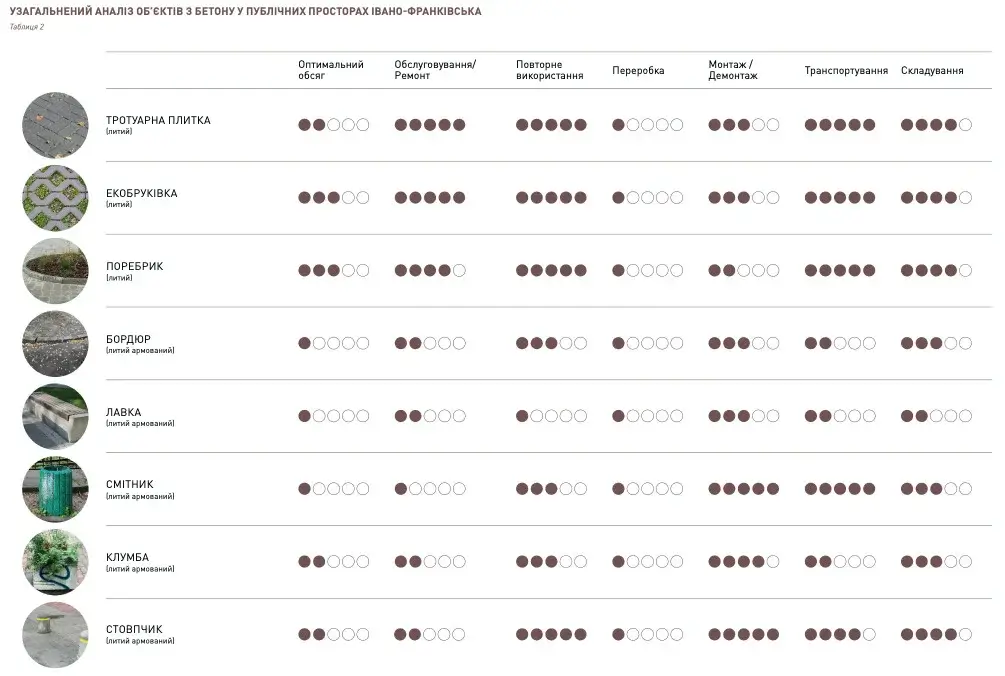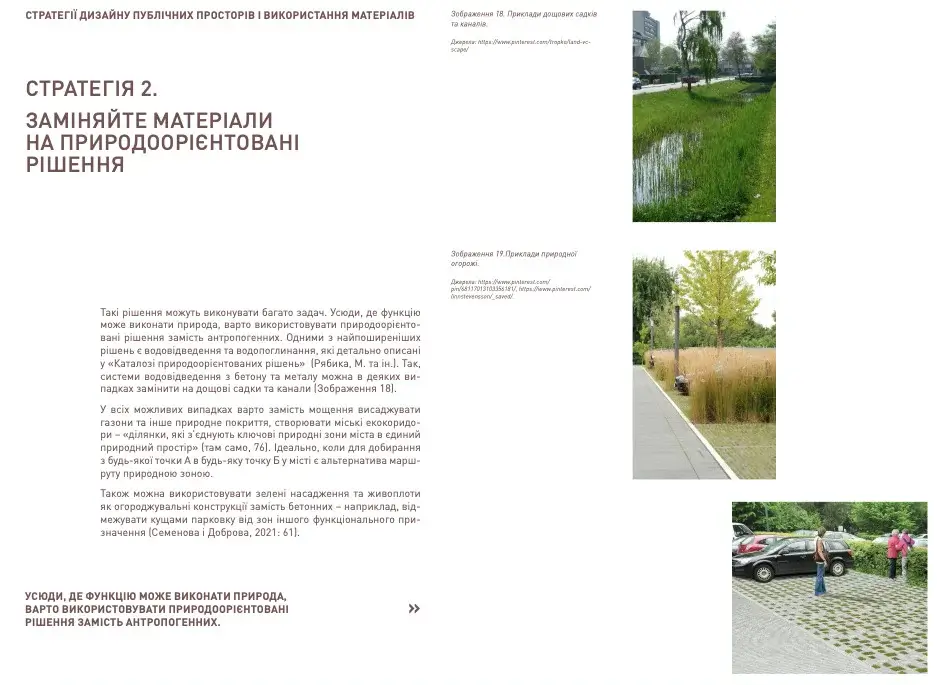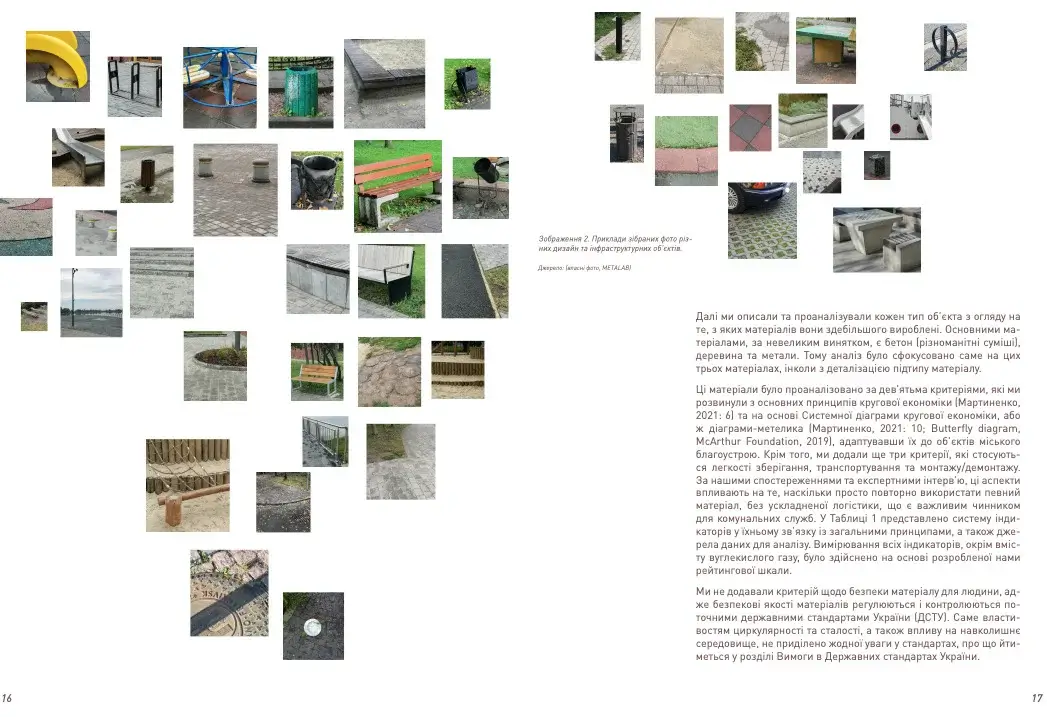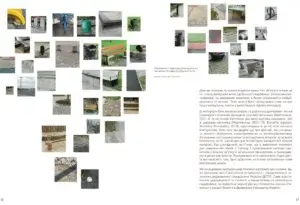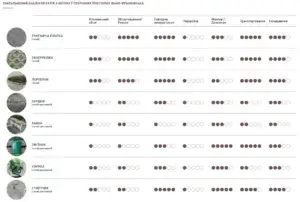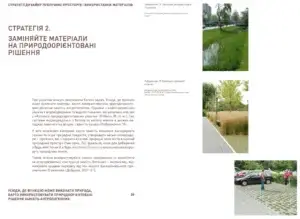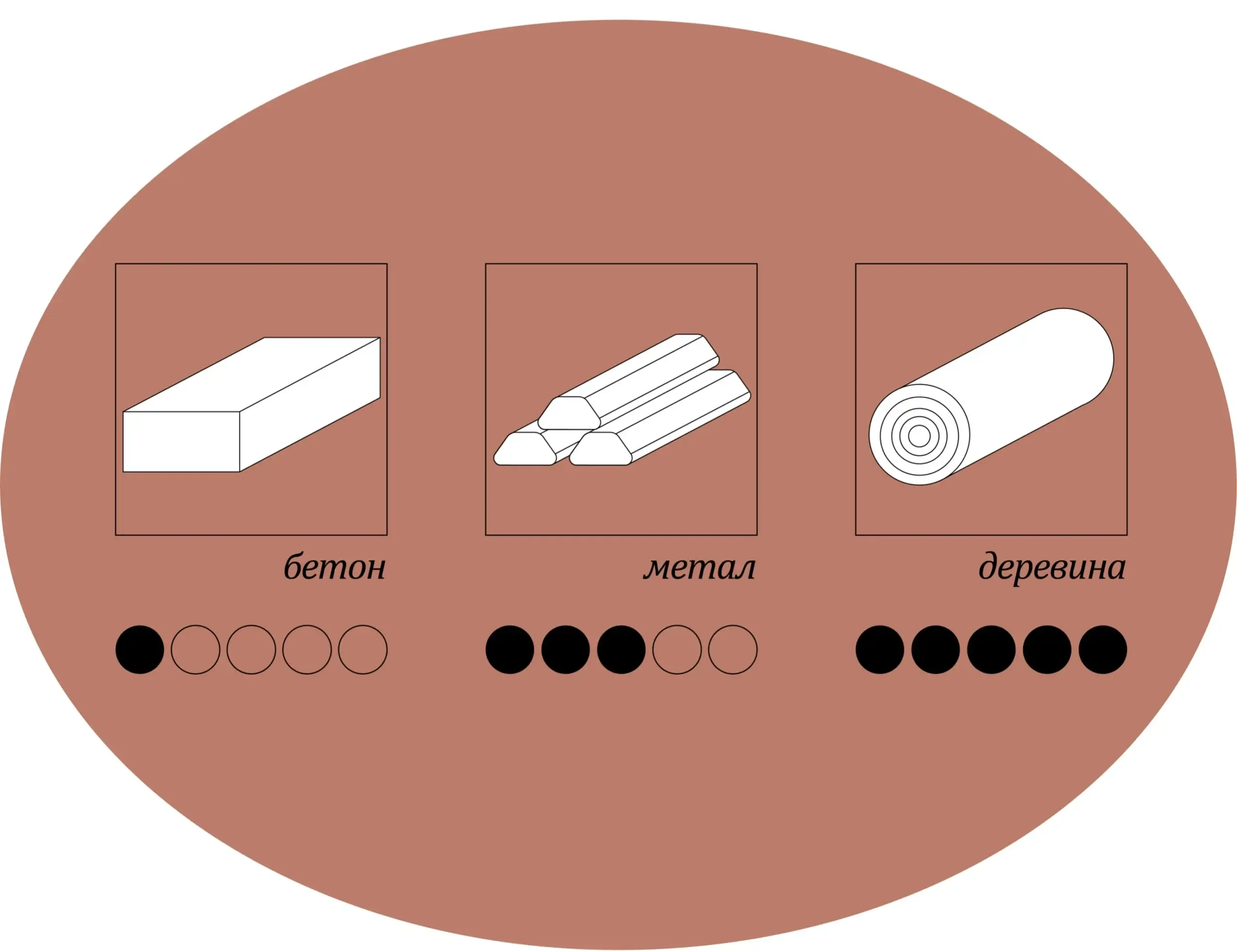TOPICS: URBAN ECONOMY, SUSTAINABILITY
FORMAT: research, publication, spatial strategy
TIME: 2022
PARTICIPANTS: Mariana Baran, Anna Dobrova, Anna Pashynska, Ksenia Semenova, Yuliia Popova (authors), Liubomyr Gural (proofreader), Yulia Rusylo (layout and design)
RELATED PROJECTS: Planning and design of public spaces in Ivano-Frankivsk: analysis of approaches based on circular economy principles, Sustainable Materials Laboratory
PARTNERS: Teple Misto, International Renaissance Foundation
“Circular Design in the Public Spaces of Ivano-Frankivsk. Analysis and Strategies of Material Use” is a study that examines the use of materials in public spaces in Ivano-Frankivsk in the context of the circular economy, as well as strategies for designing and utilizing materials in public spaces sustainably.
Ivano-Frankivsk can be considered a favorable platform for implementing circular economy principles for several reasons. Nevertheless, there are also obstacles to changing urban design approaches, including the choice of materials. For instance, contractors often choose familiar, non-sustainable materials. This paper aims to address such general gaps in knowledge and understanding of the properties of three commonly used public space materials — concrete, metal, and wood. As a result, we hope to encourage the selection and use of more sustainable materials that align with the principles of the circular economy.
We expect that the study will be helpful for municipal and private customers of public spaces, as well as architects, designers, and engineers who create similar projects and will raise the topic of more environmentally friendly usage of materials in city public spaces.
It’s the second analysis of the circular economy and ways to adapt its principles to public spaces in Ivano-Frankivsk, which we have implemented in cooperation with the Teple Misto platform.
In Ivano-Frankivsk, the team selected thirteen public spaces of various types: adjacent territories and main streets, squares and city parks, playgrounds, and spaces in newly built city areas. The selected locations in central and adjacent city spots are essential hubs for recreation and transit. This highlights the key approaches to public space improvement in Ivano-Frankivsk.
Mini-teams from the team conducted structured observations and inspections of the spaces in July 2021. They thoroughly documented all the urban design elements and infrastructure within each area, including the materials from which they are made. Every type of object was described and analyzed regarding the materials used to make them.
These materials were analyzed according to nine criteria that we developed from the basic principles of the circular economy: reduce, reuse + redistribute, remanufacture, and recycle. We also applied the Circular Economy System Diagram, or butterfly diagram, adapting it to urban amenities. Also, we added three more criteria related to ease of storage, transportation, and maintenance + repair. These aspects affect how easy it is to reuse the material without complicated logistics, which, in our experience, is essential for utilities.


